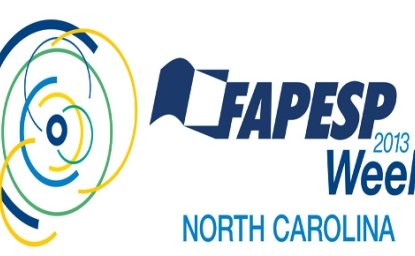Former EPA Official Says New Oversight and Resources Needed for Nanotechnology
Download the Report
At a January 11 session, The Project on Emerging Nanotechnologies at the Woodrow Wilson International Center for Scholars released a report by one of the country's foremost authorities on environmental research and policy, which examines the strengths and weaknesses of the current regulatory framework for nanotechnology and calls for a new approach to nanotechnology oversight.
Managing the Effects of Nanotechnology, authored by J. Clarence (Terry) Davies, former assistant administrator of the U.S. Environmental Protection Agency (EPA) during the George H.W. Bush Administration, argues that better and more aggressive oversight and new resources are needed to manage the potential adverse effects of nanotechnology and promote its continued development.
"It is the right time to come up with the right regulatory framework for nanotechnology—a framework that encourages initiative and innovation, while also protecting the public and the environment," Davies said. "The ideas presented in this report challenge business and government to work together to nurture and encourage nanotechnology and to anticipate and address its adverse effects."
"Nanotechnology holds tremendous potential—for improvements in health care, the production of clean water and energy, and continued advances in our IT infrastructure," said William K. Reilly, former EPA Administrator, commenting on the report. "But nanotechnology can only flourish if industry and government are committed to identifying and managing the possible risks to workers, consumers, and the environment. Davies' analysis of the federal regulatory system and recommendations should spark a necessary dialogue—among business, government and citizen groups—about how to move forward as nanotechnology develops."
"Reaching consensus on nanotechnology regulation that encourages economic innovation and environmental stewardship will not be easy," Davies acknowledges, "but it is a challenge that we cannot ignore."
Dr. Davies argues that some current regulatory approaches may work for nanotechnology applications. "The Food and Drug Administration (FDA) has the authority it needs to review and regulate nanotechnology applications in the areas of drugs and biomedical devices," Davies said. "But most of the existing applicable programs are seriously flawed, lack resources, and require new thinking and funding."
The report analyzes the strengths and weaknesses of existing laws that apply to nanotechnology and outlines provisions that a new law might contain.
"Nanotechnology is still in its infancy, presenting a clear opportunity for us to ‘get it right' from the start," said David Rejeski, director of the Project on Emerging Nanotechnologies. This project is an initiative of the Wilson Center and The Pew Charitable Trusts.
"As we continue to learn the value and benefits that nanotechnology presents," noted Rejeski, "it will be important for us to gain the commitment from industry and government to successfully position nanotechnology as the next big economic driver. If nanotechnology is to succeed, there needs to be a dialogue around the proactive approach Davies suggests. Government, business and citizen groups need to exchange views and discuss options to assure the American public that as nanotechnology matures, any adverse health and environmental effects will be identified and prevented or controlled."
"There also needs to be more in-depth public policy analysis that is informed by an understanding of the risks posed by nanotechnologies and how products are moving from laboratories to factories, and into the marketplace. The Project on Emerging Nanotechnologies is committed to helping facilitate the necessary dialogue around nanotechnology and to providing sound policy choices," according to Rejeski.
The market opportunity for nanotechnology is substantial. The National Science Foundation predicts that the global marketplace for goods and services using nanotechnologies will grow to $1 trillion by 2015. The U.S. invests approximately $3 billion annually in nanotechnology research and development, which accounts for approximately one-third of the total public and private sector investments worldwide.
Nanotechnology is the ability to measure, see, manipulate and manufacture things usually between 1 and 100 nanometers. A nanometer is one billionth of a meter; a human hair is roughly 100,000 nanometers wide.
"Dr. Davies has offered all who are interested in the benefits and risks of nanotechnology good, thoughtful questions to ponder and a series of options to consider," said Jim O'Hara, director of policy initiatives and the Health and Human Services program at The Pew Charitable Trusts. "Such options and ensuing policy dialogue are essential to ensure that society manages the potential adverse effects of nanotechnology and reaps its tremendous benefits."
______________________________________
 J. Clarence (Terry) Davies is a senior advisor at the Project on Emerging Nanotechnologies and senior research fellow at Resources for the Future. He is considered one of the foremost authorities on environmental research and policy. He co-authored the plan that created the U.S. Environmental Protection Agency (EPA) and later served as the EPA's assistant administrator for Policy, Planning and Evaluation. As a senior staff member of the Council on Environmental Quality, Davies authored the original version of what became the Toxic Substances Control Act (TSCA).
J. Clarence (Terry) Davies is a senior advisor at the Project on Emerging Nanotechnologies and senior research fellow at Resources for the Future. He is considered one of the foremost authorities on environmental research and policy. He co-authored the plan that created the U.S. Environmental Protection Agency (EPA) and later served as the EPA's assistant administrator for Policy, Planning and Evaluation. As a senior staff member of the Council on Environmental Quality, Davies authored the original version of what became the Toxic Substances Control Act (TSCA).
The Project on Emerging Nanotechnologies is an initiative launched by the Wilson Center and The Pew Charitable Trusts in 2005. It is dedicated to helping business, government and the public anticipate and manage possible health and environmental implications of nanotechnology. For more information about the project, log on to www.nanotechproject.org.
Related Links




